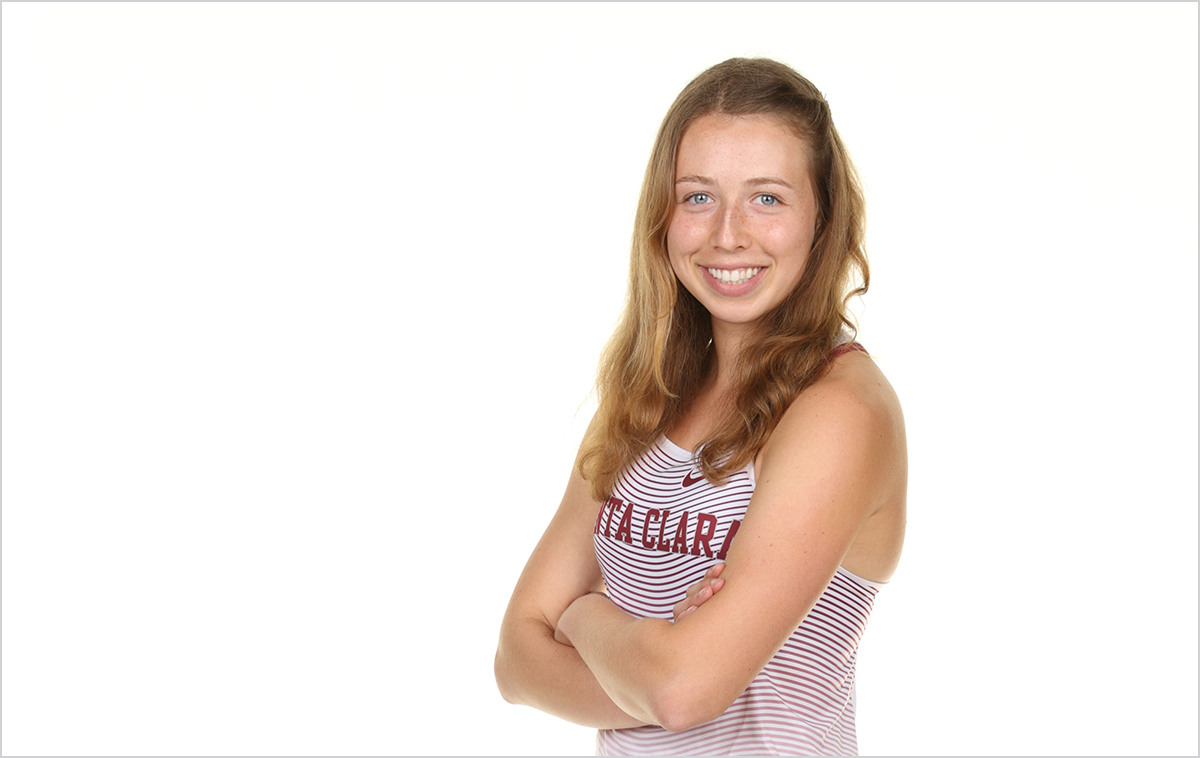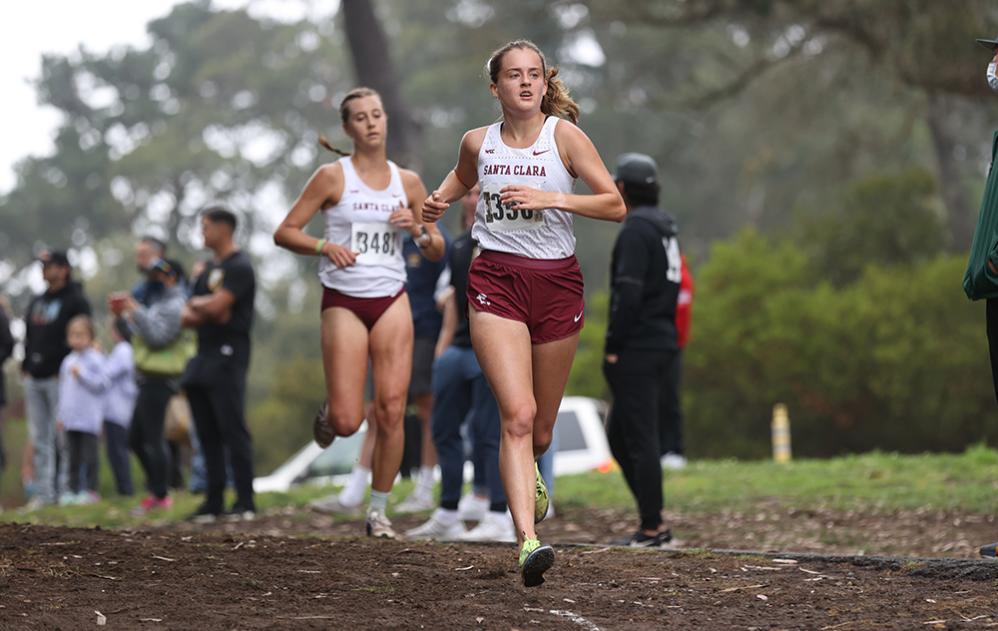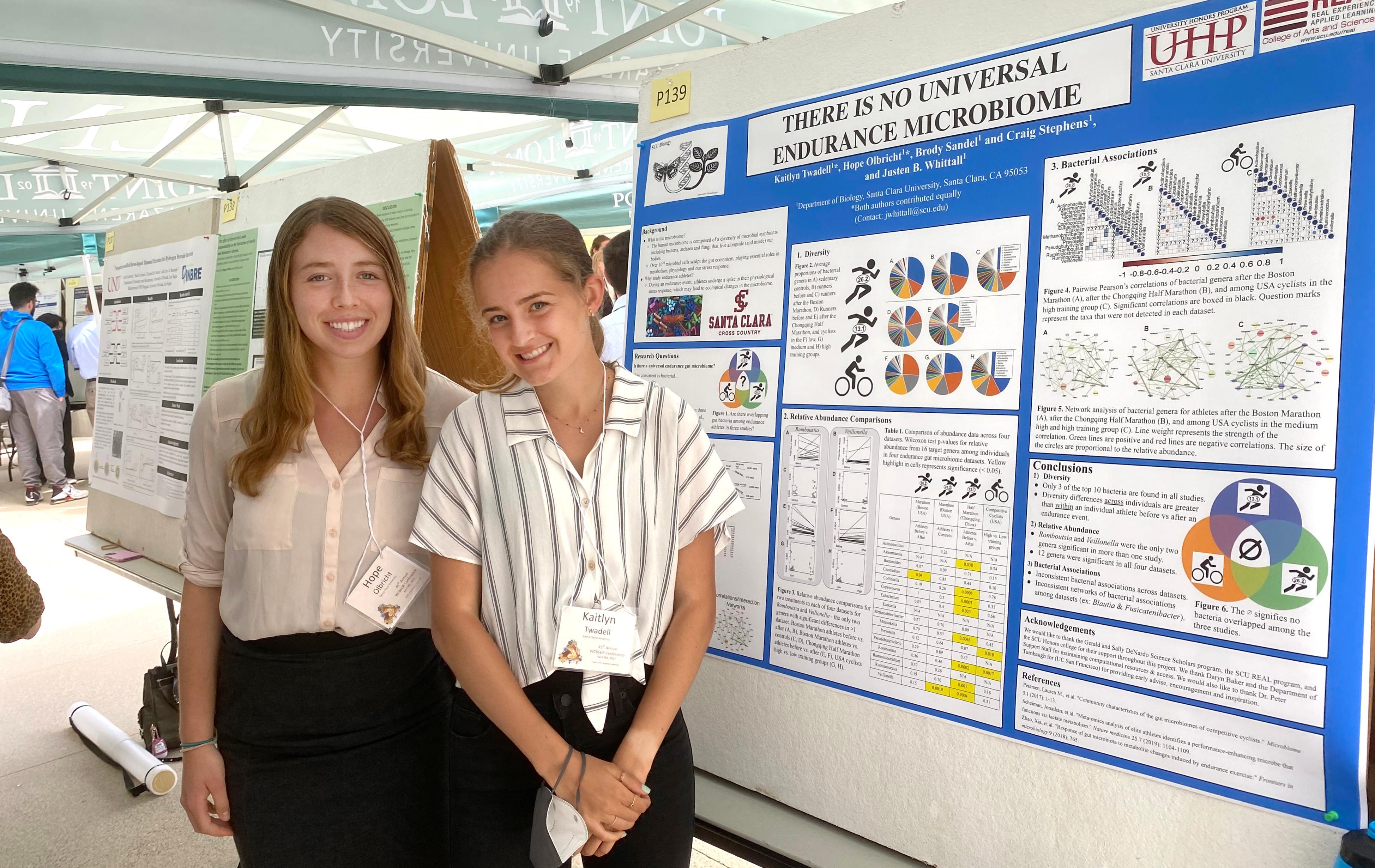Following Your Gut

If you want to buy the gut bacteria of an Olympic medalist or a professional soccer player, it’s not hard, Kaitlyn Twadell ’22 says.
It’s not on the dark web. You don’t need bitcoin. Just Google it and you’ll find plenty of businesses selling probiotics cultivated from the actual gut bacteria of world-class athletes—each company claiming its product can improve everything from endurance to sleep quality.
Buying biological material online sounds like science fiction, but it’s very real. Gut bacteria is a hot topic in science and for good reason. Researchers have learned that the way our body digests and metabolizes different chemicals can affect the way our body functions in dozens of ways.
That part of the microbiome craze is accurate. But with any emerging science comes opportunities to monetize, and not everyone has the best intentions.
Twadell, a cross country runner and DeNardo Scholar, first heard about the possibility of microbiomes improving athletic performance in 2019 during a conversation with Professor Justen Whittall, who taught her introduction to biology class.
Some of the most respected science journals in the world, including Nature, had published studies that identified common gut bacteria in groups of endurance athletes. Publications like The New York Times had taken note, running multiple articles on microbiomes including one story that openly asked if gut bacteria could make you run faster.
While it didn’t check the classic boxes of “fake news,” the science itself was still very new. The data pools in each individual study were fairly small and there was so much that wasn’t known. There were bigger questions at hand, too. Even if the supplements did what they claimed, what about the ethical and legal implications of patenting and selling biological material?
Whittall knew Twadell was on the cross-country team and wondered if there was a possible research project to explore the topic further.
“Suddenly you had companies offering to sequence your microbiome and then there were more companies that wanted to sell you a product to make your microbiome better—and that’s always a little suspect,” Whittall says. “Santa Clara’s philosophy is to make sure that we’re doing justice for everybody and this was an opportunity for a lot of people to be taken advantage of.”
Twadell had been running competitively since elementary school and physiology was a big part of her daily life. As a Division I athlete, what she ate, how she trained, how she recovered, all factored into her performance. She wanted to know more about how gut bacteria affected endurance athletes.
“Something I learned early on at Santa Clara was to look around at what needs to be done and use my skills to help address those needs,” Twadell says. “If there were endurance athletes out there who were considering doping their gut bacteria, that concerned me.”
Finding red flags in the research
Twadell recruited a team of student researchers including fellow cross country runner Hope Olbricht ’22 to design a study on microbiomes.
Whittall, a self-described “plant guy” was on board, too. His research on the evolutionary biology of plants typically appeared in publications like Bay Nature, but as a former Santa Clara University runner, he was interested in the project and offered to serve as an advisor. Professor Craig Stephens and Associate Professor Brody Sandel, helped out as well, offering additional expertise in microbiology and statistical analysis.

Kaitlyn Twadell (right) started a master’s degree program in cognitive neuroscience at University College London this fall.
The students initially planned to conduct a study on Santa Clara runners—the first microbiome study featuring NCAA athletes—but as they completed the necessary paperwork to collect samples, the COVID-19 pandemic started and their pool of athletes evaporated.
Instead of abandoning the project, they shifted their approach to investigate red flags they identified reading the original journal articles. Notably, while each study had its favorite bacteria, none of them identified the same gut bacteria in these endurance athletes. If there was a magic bullet or even bullets for improving athletic performance, Twadell and Olbricht thought, shouldn’t there be a significant overlap in findings across studies?
Twadell and Olbricht also noticed each study used different software and processes to analyze the data, meaning the results couldn’t be compared apples to apples. If they could develop a uniform bioinformatic workflow to re-run four publicly available data sets, they could expand the pool of data and find out if there really were endurance-enhancing bacteria.
Whittall helped Twadell and Olbricht organize the project and even helped get summer funding through the REAL Program in the College of Arts and Sciences.
Searching for the magic bullet
The research became an escape of sorts for Twadell and Olbricht during the pandemic. Since the data sets were so large, the student researchers had to use the high-power computers in the WAVE computing lab at Santa Clara to run the tests. Still, it could take all day to run a data set, even if there were no complications.
Since the project wasn’t part of a class, Twadell and Olbricht often had to overcome hurdles on their own. Whittall met with them weekly but challenged the students to figure out problems throughout the two-year project.
When they ran into a skill deficit, they read books, searched online, or called customer support at the then New Zealand-based Geneious Prime, the software they used to analyze the data sets. They even picked up an extra class in bioinformatics at SCU.
“It definitely taught me that you don't have to have step-by-step guidelines to succeed,” Twadell says. “I can figure it out. We can figure it out. That’s a really empowering thing.”
By the end, the students had expanded their skill sets, learning about everything from nucleotide alignments and phylogenetic trees to building 3-D structures of genes.
“It was just so cool and so inspiring to see how quickly they could not only acquire new skills but apply them in new ways,” Whittall says. “I admire those young curious minds, and how fast they work. Sometimes I was just hanging on for the ride because they were always a couple steps ahead of me.”
When they finished their study, Twadell and Olbricht confirmed their original hypothesis. Out of the four data sets they re-tested, only two types of bacteria out of the hundreds collected overlapped and those two only appeared in two of the four data sets—a “paltry” amount of evidence for a universal endurance microbiome, according to Whittall.
“It was a unique opportunity to see if there is anything consistent in an endurance athlete’s gut,” Whittall says. “The answer is, either we missed it, which you always have to leave as an option, but I think more likely there’s not. Everybody’s bacteria is so unique that there’s not going to be one bacteria or even one group that makes an athlete special.”
“It couldn’t be me”
While the students didn’t uncover the secret to unlocking world-class athletic performance, it was a powerful lesson in ethics and good science. In short, when there’s money to be made, critical research can often go by the wayside. It’s the job of good scientists to make sure that doesn’t happen.
In 2022, Twadell and Olbricht published their paper in Microorganisms, a peer-reviewed open-access scientific journal. Olbricht is quick to point out that while their results were an important piece of the puzzle, microbiomes and athletic performance still deserve more study.
“Even though we didn’t find anything substantiating that bacteria could increase your performance, I think that still could be a possibility,” Olbricht says. “We just don’t know yet.”

Hope Olbricht and Kaitlyn Twadell present their research at the 2022 West Coast Biological Conference for undergraduates.
Twadell agrees, saying Santa Clara taught her that good science is all about asking tough questions and testing, then retesting, results. She hopes people continue researching microbiomes to better gauge these possibilities.
“One lesson I kept learning in all my research classes was that we would start with one question and we’d end up with so many more questions—more questions than answers,” Twadell says. “And I think that’s a good place to be.”
Both Twadell and Olbricht have continued their scientific research after graduation.
Twadell worked as an NIH Postbaccalaureate Research Fellow with the National Cancer Institute in Bethesda, Maryland before starting a master’s degree program in cognitive neuroscience at University College London. Meanwhile, Olbricht is pursuing her dream of becoming a physician and is currently working in the emergency department at a hospital in Seattle while she studies for the MCAT.
As for those microbiome pills Twadell found online, they’re still for sale. But she won’t be ordering them anytime soon.
“I would be very hesitant,” Twadell says with a laugh. “If someone else wants to try that, they're free to do so, but it couldn’t be me.”
The Gerald and Sally DeNardo Science Scholars program supports the undergraduate research experience of outstanding science students with Santa Clara University faculty mentors. Scholars receive academic year and summer research and supply awards. The program is funded through a generous endowment created by Gerald and Sally DeNardo.